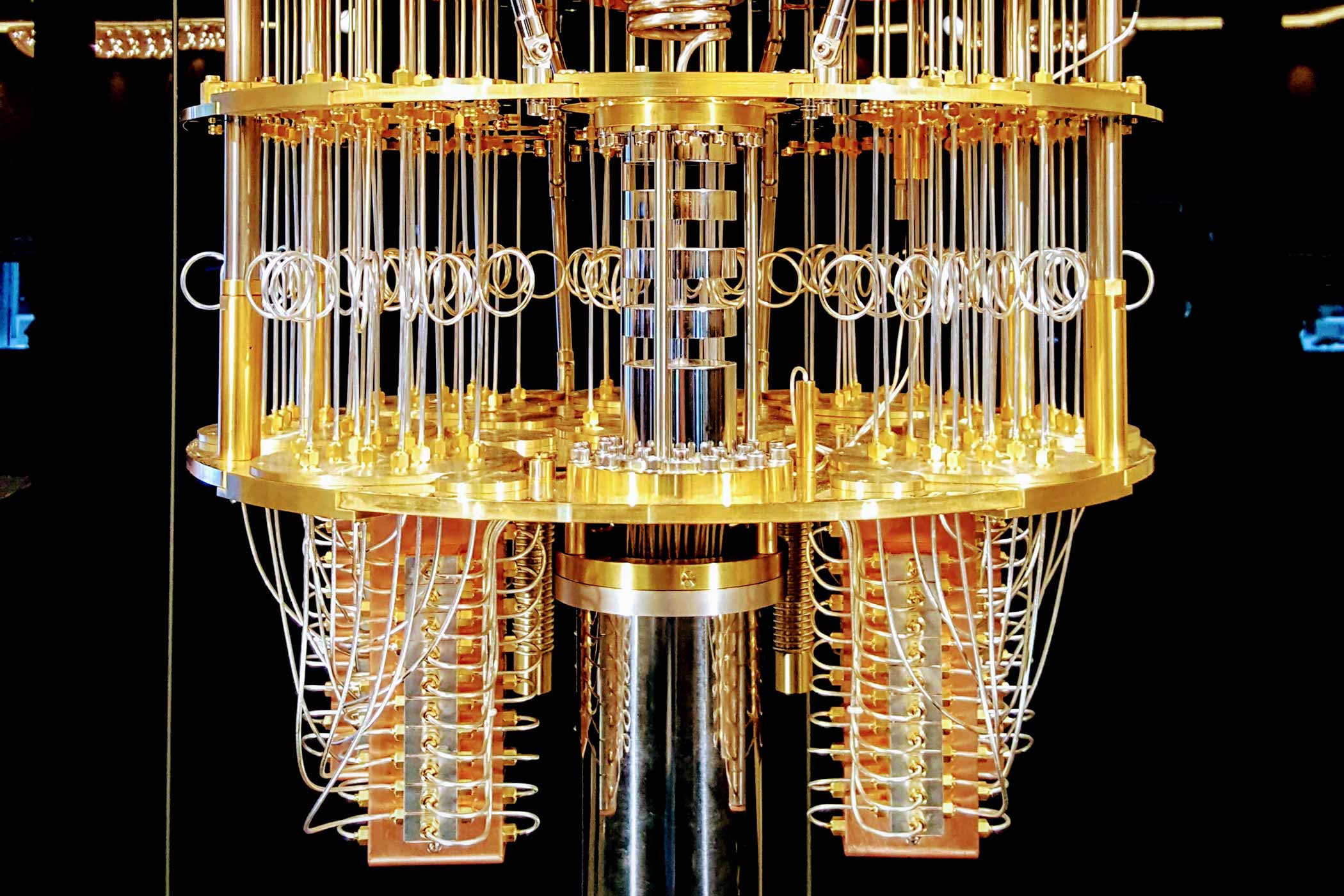{{item.title}}

When it comes to understanding quantum physics, for most people it sits next to understanding how the universe works in its degree of difficulty. But at its most basic, it’s the study of how really, really small things work. Subatomic particles, for example.
Einstein referred to the way some of these tiny things interact as ‘spooky’. That gives you a fairly good indication of how not ‘normal’ quantum mechanics can be when compared with everyday reality.
Take this image for example. It’s highly likely that the majority of readers would guess that what it shows is some kind of steampunk-esque chandelier.
Photo: Lars Plougmann (Flickr)
But what if we were to tell you that what you’re looking at is actually a computer? A quantum computer to be exact. And while it looks like a set piece out of Batman’s cave, it’s much more than scientific decoration.
Without getting too far into the detail (quantum physicists, we beg you to stop reading now) quantum computing is being hailed as the next big thing because of its ability to work at magnitudes of scale far greater than traditional or ‘classic’ computers – even supercomputers, which are already millions of times faster than an average PC.
It all comes down to Qubits. The computer you are potentially reading this article on operates on digital bits. These are the infamous 1s and 0s. When combined in various ways, these bits form binary code, and the basic instructions for your computer to compute. So, for example, DP, for Digital Pulse, in binary would be written as 01000100 01010000.
This information stream of bits flows through transistors (which allow or deny them passage). But, as you’ll know if you’re reading this on your smartphone, transistors are getting small. Really small. And when a transistor that lets this information flow gets to the size of a few atoms in diameter, they start playing in the quantum realm and things start to go wonky. Electrons, for instance, can simply jump through the on/off switch of the transistor.*
Don’t worry, you don’t need to know why, just understand that stuff begins to stop working the way it should.
This is where quantum computing could provide a really interesting alternative. Instead of just being limited to configurations of 1’s and 0’s, in quantum computing, there are more options. Qubits can actually be, 1’s, 0’s and both at the same time (this is called superpositioning).1
It is in some ways like the infamous Schrödinger’s Cat experiment: if a cat is put in a box with poison that may or may not be released, but you can’t see into the box, the cat can be thought of as dead and alive at the same time. As soon as the box is opened, it can only be one of those things.**
With Qubits, as long as one doesn’t try and define (or ‘measure’) which they are at any one point, they can also be more than one thing. The key fact here is that this means there are vastly more combinations of 1’s, 0’s and ‘boths’ that can be configured as computer instructions.
This equals more processing power, exponential speed, and just bigger everything.
So far, computer scientists aren’t even sure what this will mean. There will be uses for machine learning, databases, cryptography, and the ability to create simulations that can be used to gain understanding into any number of previously hard to explore, data-intensive areas such as nature, space, neural networks, or the brain.
It will take a while before quantum computing gets to this stage of sophistication, but in the meantime, businesses should pay attention to the practical uses this could bring into understanding old industries and inventing platforms for new ones.
*This is known as quantum tunneling. *Interestingly, Schrödinger was trying to disprove the idea of superpositioning. And in some ways he was right – it doesn’t work with cats. But when you get down to really small things, like electrons, things get interesting.2
Get the latest in your inbox weekly. Sign up for the Digital Pulse newsletter.
Sign Up
References

© 2017 - 2025 PwC. All rights reserved. PwC refers to the PwC network and/or one or more of its member firms, each of which is a separate legal entity. Please see www.pwc.com/structure for further details. Liability limited by a scheme approved under Professional Standards Legislation.
